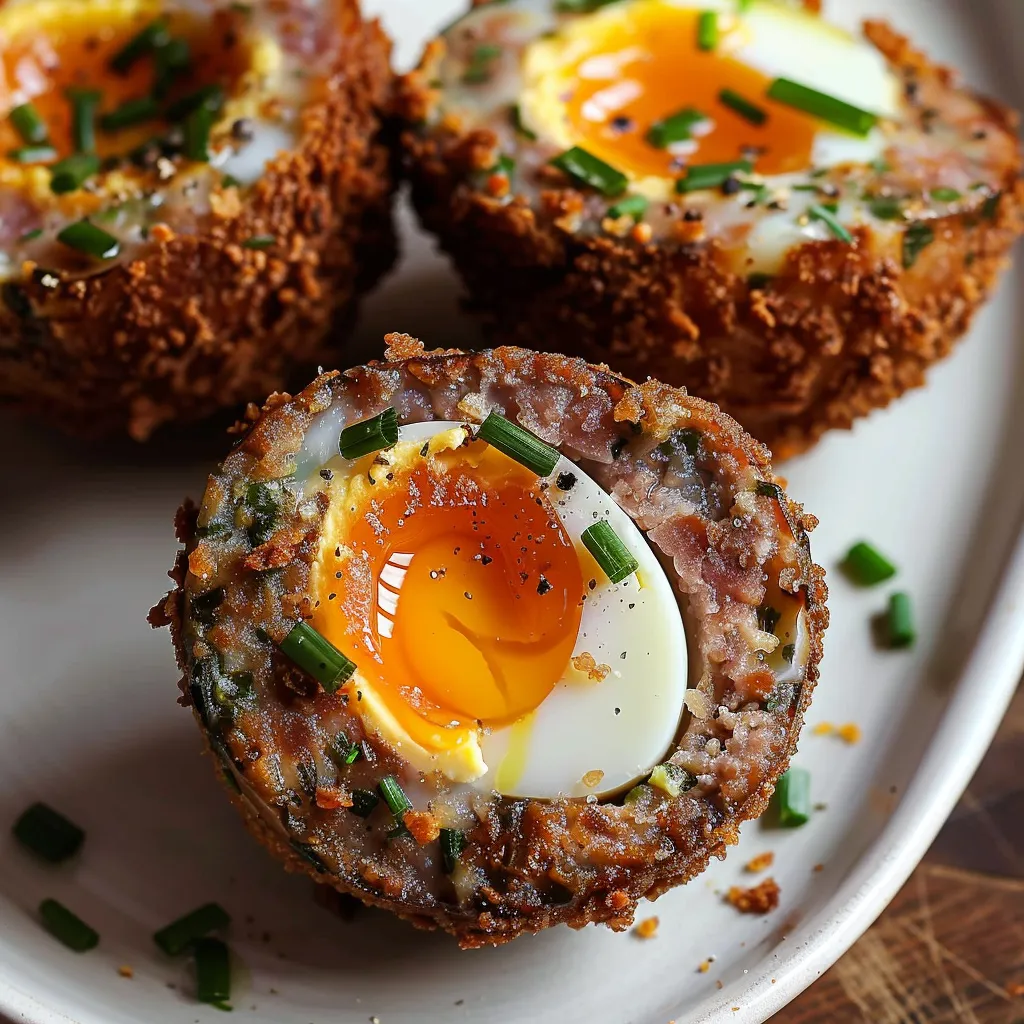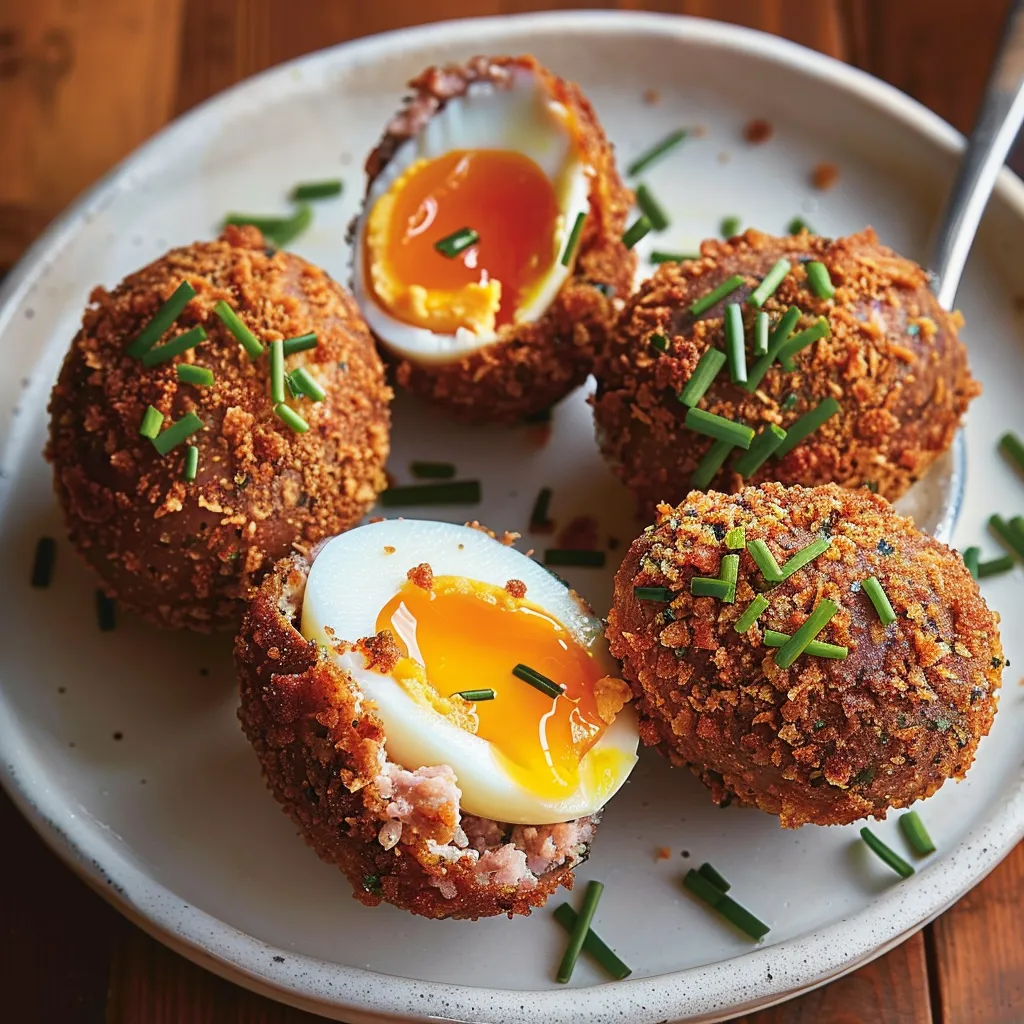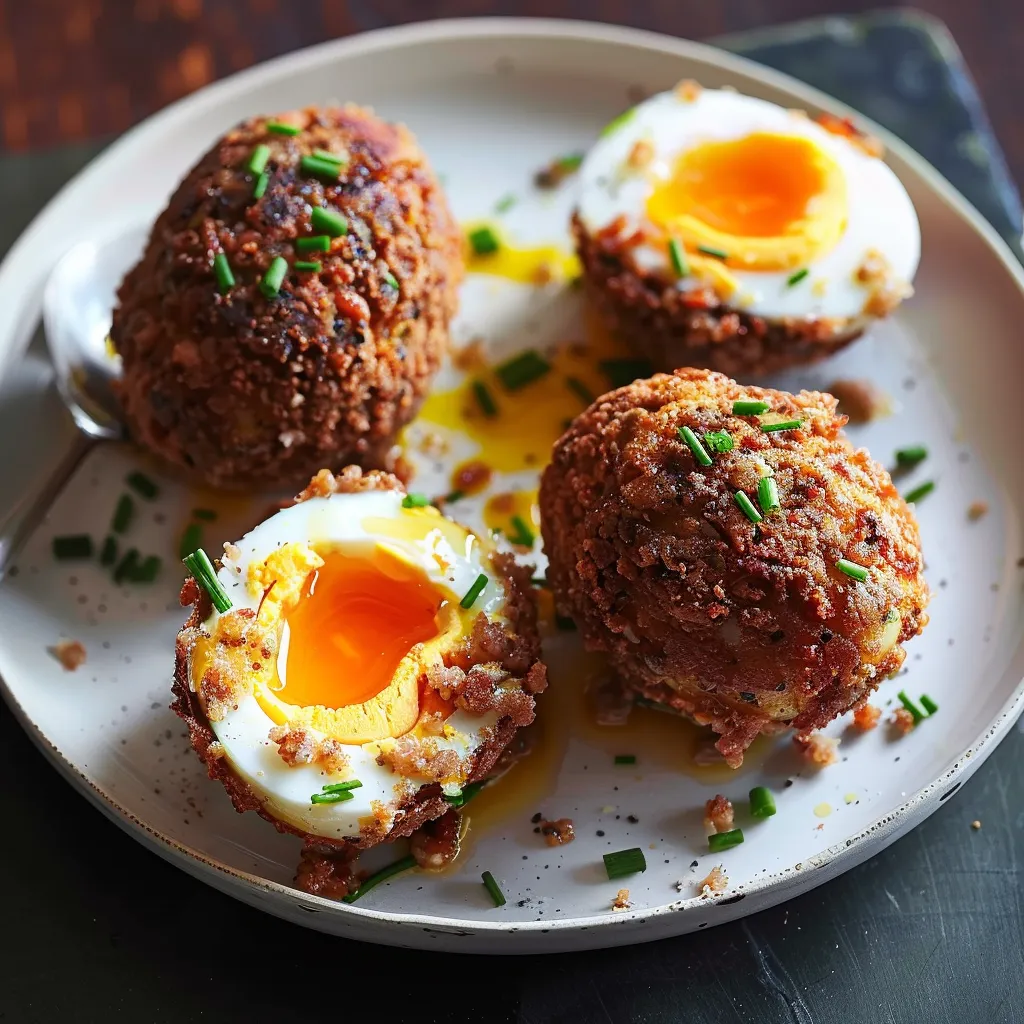 Pin it
Pin it
The moment you bite into a freshly made Scotch Egg, you experience a perfect harmony of textures – the satisfying crunch of golden panko giving way to a layer of savory, herb-flecked sausage, finally revealing the treasure at its center: a perfectly cooked egg with that coveted jammy yolk. Though their name suggests Scottish origins, these protein-packed delicacies actually gained popularity in London's 18th-century taverns as the ideal drinking snack. In my kitchen, they've become a weekend favorite that never fails to impress brunch guests looking for something beyond the usual fare.
Last month, I made these for a family gathering, and my food-skeptical nephew, who typically subsists on chicken nuggets alone, devoured two in quick succession. The secret? Taking care with each component, especially achieving that perfect soft-boiled egg that creates the 'wow' moment when you cut into it.
Essential Ingredients and Selection Tips
- Eggs: Choose large, fresh eggs for the best results. Extremely fresh eggs are harder to peel after boiling, so eggs that are a week old work perfectly.
- Breakfast Sausage: Look for high-quality pork breakfast sausage with visible herbs and a good fat content.
- Panko Breadcrumbs: These Japanese-style breadcrumbs create a lighter, airier coating than traditional breadcrumbs.
- Fresh Herbs: Don't skip the fresh chives and parsley – they brighten the sausage mixture considerably.
 Pin it
Pin it
Detailed Cooking Instructions
- Perfect the Soft-Boiled Eggs:
- Fill a medium saucepan with enough cold water to cover 4 large eggs by about an inch. Bring the water to a rolling boil, reduce heat slightly, and set a timer for 4 minutes for a jammy yolk. Transfer eggs to an ice bath for 10 minutes, then peel.
- Prepare the Flavorful Sausage Mixture:
- Finely chop fresh chives and parsley. Combine with breakfast sausage, mustard, salt, pepper, and nutmeg, then mix thoroughly.
- Set Up Your Breading Station:
- Prepare three bowls: flour with salt, whisked egg, and panko breadcrumbs.
- Master the Wrapping Technique:
- Flatten sausage into an oval, wrap around an egg, and seal completely.
- Apply the Double Coating:
- Roll each sausage-wrapped egg in flour, egg wash, and panko breadcrumbs.
- Fry with Precision:
- Heat oil to 325°F and fry for 5-7 minutes until golden brown and cooked through.
- Drain and Rest:
- Transfer to paper towels to drain excess oil, then rest before serving.
- Serve with Complementary Condiments:
- Pair with mustard, aioli, or a simple herb mayo for extra flavor.
I first encountered Scotch eggs during a study abroad semester in London, where I was impressed by how a simple pub snack could be so perfectly executed. Years later, after several attempts to recreate that experience, I finally perfected my recipe by focusing on the details – properly jammy yolks, well-seasoned sausage, and that perfect crispy coating.
I'll never forget serving these at a garden party where an elderly British guest told me they were better than the ones he remembered from his childhood in Yorkshire. That moment of culinary connection across cultures and generations remains one of my favorite cooking memories.
 Pin it
Pin it
Frequently Asked Questions
- → Can I bake these Scotch eggs instead of frying them?
- Yes, you can bake Scotch eggs instead of frying. After breading, place them on a parchment-lined baking sheet, spray or brush with oil, and bake at 400°F (200°C) for about 25-30 minutes, turning halfway through, until the sausage reaches 145°F internally.
- → What can I serve with Scotch eggs?
- Scotch eggs pair wonderfully with a variety of accompaniments. Try serving them with mustard, pickles, or a simple green salad. They're also excellent with chutney, piccalilli, or a tangy dipping sauce like honey mustard.
- → Can I prepare Scotch eggs in advance?
- Yes, you can prepare Scotch eggs up to 24 hours in advance. After cooking, cool completely, then refrigerate in an airtight container. Serve cold or bring to room temperature before serving. They're actually a traditional picnic food because they travel well!
- → What type of sausage works best for Scotch eggs?
- Traditional breakfast sausage works well, but you can experiment with different varieties like sage sausage, Italian sausage (mild), or even chorizo for a spicy twist. Just make sure to remove any casings before using.
- → How do I know when the Scotch eggs are fully cooked?
- The best way to check doneness is with an instant-read thermometer inserted into the sausage layer, which should read at least 145°F. Visually, the exterior should be deep golden-brown, and if you cut one open, the sausage should be fully cooked with no pink remaining.
